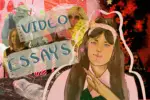There are always plenty of Halloween movies to watch in October, but recently released documentary “A Life on Our Planet” invokes a different type of fear.
Everyone knows who David Attenborough is. The incredibly prominent figure has dedicated his entire life to informing as many people as he can about the state of the planet. “A Life on Our Planet” reflects on his experiences and opens with the impactful: “I am David Attenborough, and I am 93. This is my witness statement.”
The environmentalist isn’t getting any younger and he has enormous shoes that will need to be filled. Activists like Gen Z’s Greta Thunberg are already making an impact; she and Attenborough have talked together at length, but as impressive as Thunberg is, David Attenborough’s presence on the TV screen is one you can’t ignore. “A Life on Our Planet” is his final attempt to push humanity into action, emotionally and bluntly showing us that what we have done to our home needs to stop. This inspires feelings of hopelessness and despair but the message of hope at the end tells viewers that there is still some time left, which will hopefully trigger action.
The documentary shows both Attenborough’s life and career, from being a young man playing with gorillas to him talking to the camera with tears in his eyes at what we have done to the planet. The documentary mixes footage from his adventures around the globe with stern warnings about humanity’s impact on biodiversity on Earth.
As beautiful as previous Attenborough documentaries are, they have been said to glaze over the full repercussions of global warming. No one can say the same for this one. He speaks to the camera in Chernobyl, comparing what happened there to what is happening now in the rest of the world. He also shows how nature is slowly reclaiming the abandoned land and how nature thrives without humans. It doesn’t need us. We need it. Yet we’re killing it.
David Attenborough’s Long Career
Attenborough has released several documentaries on the planet, including “Planet Earth,” “Frozen Planet” and “Blue Planet.” The impact of his work is undeniable — views spiked for Wikipedia pages on animals mentioned in “Blue Planet 2” episodes at the time of their release, according to EuroNews. However, they go on to say that environmental documentaries raise the profile of the problem but rarely impact the areas that communities are actually able to meaningfully change.
Although Attenborough is incredibly inspiring and his documentary “A Life on Our Planet” moved many people to tears, those that most need to see his work apparently aren’t watching. Those who are the biggest polluters either haven’t watched his documentaries, or have watched them but haven’t changed their practices; they aren’t going to be swayed by yet another documentary, as heartbreaking as that is. The general public and celebrities have praised the film, but it’s the corporations that contribute the most to polluting that really need to see Attenborough’s movie. And as much as we may want to, we can’t force them.
Memorable Moments in “A Life on Our Planet”
One of the most impactful moments of “A Life on Our Planet” has got to be when Attenborough looks back at old footage of himself exploring the wilderness. He says: “I look at these images now and I realize that although as a young man I thought I was out there in the wild experiencing the untouched natural world, it was an illusion. … Those forests and plains and seas were already emptying.”
The sudden realization reminds us that the “wild” seen in this footage is now just the tiniest fraction of our planet and that through deforestation and greed we have devastated countless habitats and beautiful forests, driven amazing animals to extinction and this is quickly becoming irreversible. Most people are already aware of this, but seeing it at this scale is shocking. Footage of monkeys desperately trying to outrun a fire and a koala limping across a road looking for a place to hide from the blaze is agonizing and guilt-inducing to watch.
A Glimpse of Hope
Ending a documentary like this would leave anyone feeling hopeless. So much of the world is destroyed; what can anyone do to repair it? So, Attenborough leaves us with a message of hope to motivate viewers.
He ends with a heart-warming clip of a baby gorilla trying to take his shoes off as he talks to the camera: “I may not be here to see it, but if we make the right decisions at this critical moment, we can safeguard our planet’s ecosystems, its extraordinary biodiversity and all its inhabitants.”
Attenborough tells viewers that by raising living standards for those who are in need without increasing consumption, switching to renewable energy sources and attempting to re-wild the planet, we may be able to help our world. These solutions are reassuring, but this seems too simple. What happens to the people that live in the areas we need to “re-wild”? He also says we need to stabilize the human population to be more sustainable, but access to birth control in developing countries is limited just like other resources like food, water and medication.
His suggestion to cut out fossil fuels is much more realistic; many countries are taking great strides in that area as the price of renewable energy falls and governments yield to pressure to cut out coal consumption. Despite his overly simplistic solutions, this inspirational figure may influence those in power to come up with realistic solutions of their own.

















